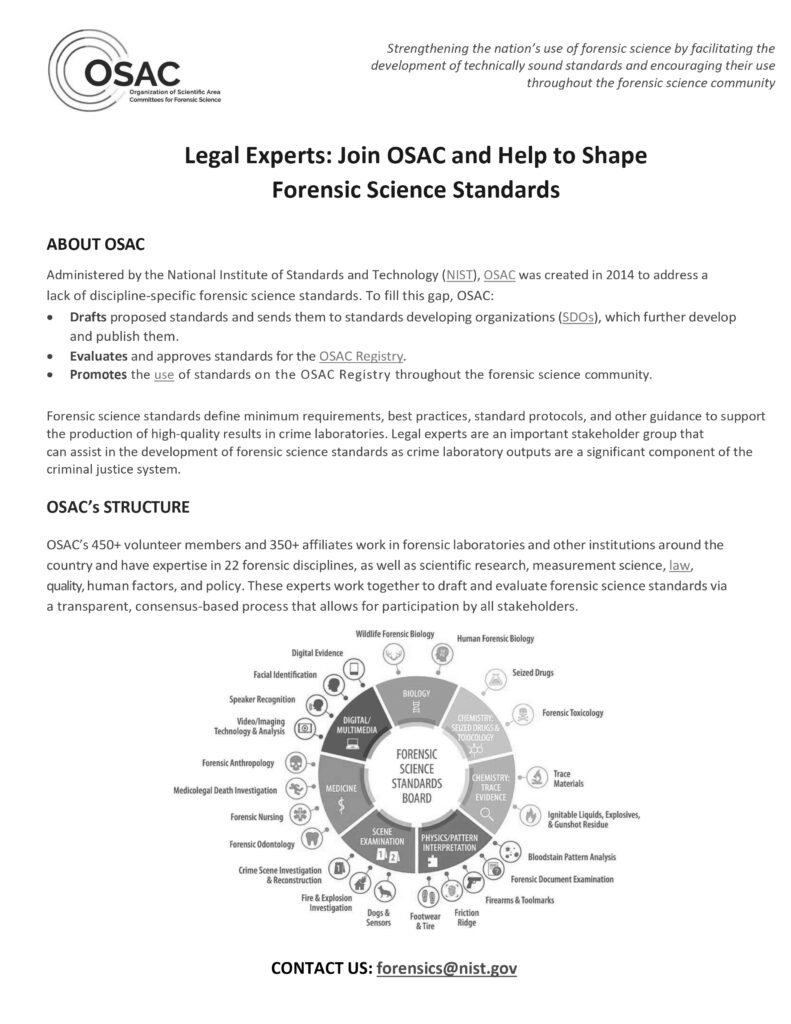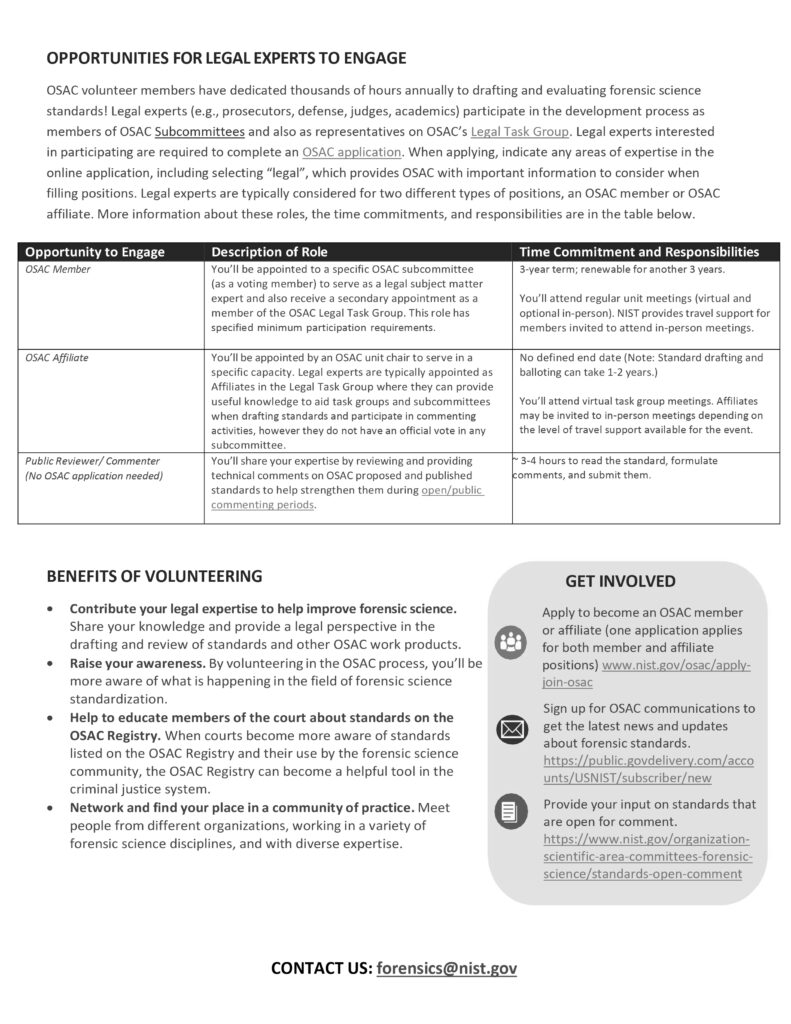By Jeff Swain
District Attorney in Parker County
Have you ever been preparing an expert witness in a forensic field to testify and wondered why she must couch the answers to your questions in a certain way?
The reason may be that her field of expertise has limitations on the words she is permitted to use to convey her opinions. That may be the case even though the examiner could better describe the persuasive value of her test results or opinions with different word choices or descriptions that would also line up with the science in her field.
Why would forensic standards be written this way?
One reason may be that only 10 percent of the attorneys who volunteer to participate alongside the scientists in the organization that writes these rules are prosecutors. The vast majority are criminal defense attorneys, and the balance are in academia. These people do not have prosecution’s interests in mind when they are creating forensic science standards.
This article, then, is my call for prosecutors with some expertise—or even just an interest—in any forensic science fields to step up and help with the group that creates these standards, the Organization of Scientific Area Committees for Forensic Science (OSAC).
I myself do not presently serve on any of these OSAC committees, but I do serve on a forensic science working group with the National District Attorneys Association alongside some prosecutors who volunteer with OSAC. These prosecutors explained the need to me in a recent meeting. There are a variety of participation levels for interested prosecutors, ranging from several hours for a public reviewer or commenter, to an OSAC Affiliate or full committee member, each of which would require a greater commitment over a longer period of time.
Interestingly, OSAC officials want prosecutors’ input and involvement as well. One OSAC official who recently reached out to our group said that he knows there is an imbalance of what types of attorneys make up the committees, but if no prosecutors apply for the positions they need to fill, they have to appoint the defense attorneys or academics who do.
What OSAC does
OSAC is responsible for developing standards for 22 forensic disciplines. Its subcommittees focus on each of these disciplines and are comprised of practitioners, researchers, lawyers, and other stakeholders. OSAC rules impact forensic testing in all areas, including DNA, crime scene, firearms and toolmarks, autopsy evidence prosecutors may admit in a murder case, the testing of the drug exhibits in a narcotics case, blood testing in a DWI case, and the fingerprint testimony we use to prove up an enhancement.
Not only do the established standards require testing or examination to be conducted in a certain manner with particular equipment or facilities, but they may also limit the testimony permitted by the expert witness. A demonstration of the need for prosecutors on OSAC subcommittees is the fact that, at present, the only legal representation on the DNA and Friction Ridge (fingerprint) Subcommittees is by criminal defense lawyers.
You may be familiar with the 2016 report of the President’s Council of Advisors on Science and Technology (PCAST), which questioned the foundational validity of forensic fields such as DNA, fingerprints, firearms and toolmarks, bitemarks, and hair comparison. The report purported that, in some of these areas, large scale, black box studies have not been completed, reviewed, and published in peer-reviewed journals. (Read an article on this topic from a 2018 issue of this publication here: www.tdcaa.com/journal/responding-to-pcast-based-attacks-on-forensic-science.)
Many new studies of the exact type the report recommended have been conducted in some of these fields, confirming their validity. For example, this past May, a black box study involving 228 firearms examiners was published in the Proceedings of the National Academy of Sciences and showed that true-positive and true-negative identification of firearms cartridge-case comparisons exceed 99 percent accuracy.[1] In the wake of the PCAST report and with these latest studies in mind, new standards are being developed. It is in our interest as prosecutors to have a seat at the table so that the standards developed are workable for practitioners and will allow us to accurately depict the science and its data in court.
The results of this latest research have also caused some introspection about the use of testimony and evidence in some fields that have fallen more into disrepute. For example, forensic odontology and forensic hair comparison have both been re-examined and found to be lacking in some significant regards. As we strive to see that justice is done, it is equally in our interest to assist in the development of standards in fields such as these. In some instances, there is nothing wrong with the science, but rather the way it was presented in court led to its value being misunderstood, not only by jurors but also by prosecutors and judges who may have limited scientific backgrounds.
There is probably not a DA’s or CA’s Office in the state of Texas that doesn’t have a staff of overworked prosecutors. So, when I am asking for volunteers, I know it’s a big ask. But given the importance of forensic science to modern-day prosecutors, this is an important area that deserves some of our time. Please consider volunteering to be an OSAC member, affiliate, or public reviewer or commenter. For more information, email [email protected], and see the OSAC flyer reprinted below.


Endnote
[1] Guyll, Max, et al., “Validity of forensic cartridge-case comparisons,” May 8, 2023, Proceedings of the National Academy of Sciences, www.pnas.org/doi/10.1073/pnas.2210428120.